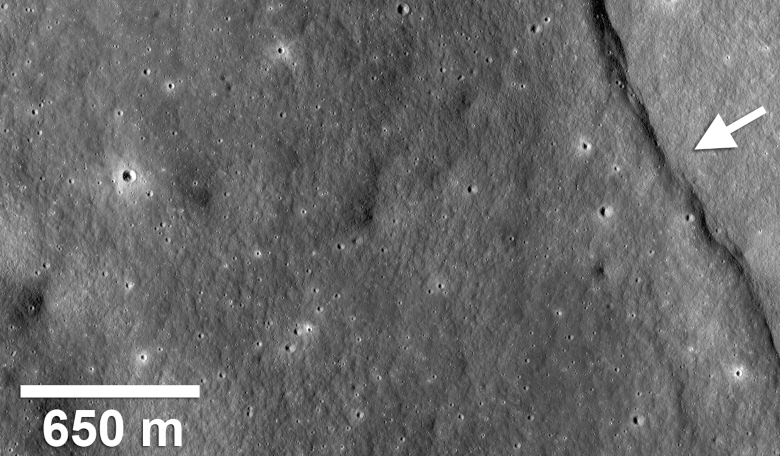Shallow moonquakes recorded at four different landing sites during the Apollo programme suggest that the Moon is currently tectonically active, say scientists who have been trying to pin point the epicentre of the quakes with the help of data from NASA's Lunar Reconnaissance Orbiter (LRO).
Moonquakes, like the recent marsquakes that were recorded on Mars, are caused by the sudden release of energy transmitted as seismic waves and there are at least four different kinds of them on the Moon. Two are associated with vibrations originating underground – deep and shallow ones – another is due to vibrations from the impact of meteorites and the last variety are thermal quakes; these are formed after the Moon has undergone two weeks of freezing nights and is then subsequently warmed by the morning Sun, causing the surface layers to expand.
Of all the types that have been identified, it was reported that the shallow moonquakes, ones that emanate 20 or 30 kilometres below the surface, were the ones that the astronauts weren’t particularly keen on. Of the 28 quakes captured by seismometers, some that were recorded in the last 5 years of the Apollo missions registered up to 5.5 on the Richter scale. Back on Earth, a quake of this magnitude is energetic enough to crack plaster and move heavy furniture.
Despite the apparent intensity felt by those stood on the lunar surface when the waves rippled beneath their feet, the epicentre locations of these quakes were poorly constrained by data collected at the time.
Now though, researchers in the US and Canada, have used a problem-solving computer program called a relocation algorithm to help determine whereabouts the waves may have struck from. The algorithm, called LOCSMITH, works by looking at the uncertainties in the seismic waves arrival time to help it work out where it started from. It doesn’t give just one location however, but gives a few possible locations which are then referenced with the original seismic data to help refine the original source.
The team, whose lead author on the recent research paper submitted to Nature Geoscience is Thomas R. Watters based at the Smithsonian Institution, Washington, DC, then match up the candidate locations of the quakes with the position of any known tectonic features in that area.
It turns out, that a large proportion of the quakes coincide with young fault scarps; a displacement of the land caused by a shortening, or contraction, of the crust. These faults are part of a vast, global network revealed in high resolution images collected by the LRO and have been estimated to be less than 50 million years old. “Such a young age raises the intriguing possibility that these thrust faults are currently active,” says Watters and colleagues in their paper.
An analysis of the orientations of the fault scarps has led Watters and colleagues to suggest that the scarps are a result of tidal forces; the to-ing an fro-ing the Moon experiences as it orbits the Earth.
The team also go on to say that the fault slip events which create the seismic waves are most likely to occur when the Moon is close to its furthest point away from the earth, a location known as apogee.
Further data is needed to thoroughly test this result say the team but as the seismometers which faithfully radioed data back to Earth were switched off in 1977, this would fall to images collected by the LRO’s narrow-angle camera (NAC) to help search for evidence of very recent changes in the landscape.
That is unless a new long-lived Lunar Geophysical Network (LGN) could be deployed to the surface in the near future. The LGN would involve a suite of science instruments being placed at four geographically diverse locations on the lunar surface and the feasibility of such a mission has already been proposed, however nothing so far has come from it. But now that the Moon is back in fashion, scientists may only have to wait until 2024 before a suitable opportunity arises for an LGN to go ahead.











